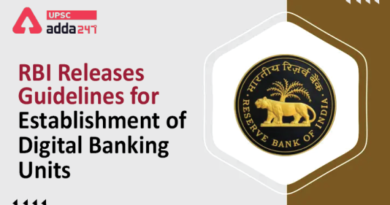Recent Challenges in with them Indian Banking and way forward to cope up

With the advent of technology, banking has come way forward and modern-day banking has unique challenges and ways to cope up with them. Here in this article we will try to discuss few challenges of modern-day banking and ways to cope up with them.
1. Adaption of Digital Banking & Cybersecurity – With the growth of digital banking and reliance on technology, banks must invest heavily in technology to provide secure and seamless services to customers. However, integrating cutting-edge technology while maintaining legacy systems can be difficult. Moreover, as digital banking expands, the risk of cyberattacks, data breaches, and fraud increases. Banks must continuously upgrade their cybersecurity measures to protect sensitive customer information and maintain trust. Various efforts are being made by banks, financial institutions and government to curb malpractices like cyber frauds, digital arrests, still awareness and alertness of customers will play key role in avoiding such mishaps. Apart from that, there is still some reluctance in usage of technology, specifically when it comes to usage of technology in managing personal finances, so mindset of customers, needs to be changed.
2. Rising NPA’S and Unsecured credit– With great opportunities comes great risk. With expanding businesses and growth in tier 2 and small cities, there are more opportunities for banks to extend credit. But with that comes higher risk of failures of business, which in turn increases probability of loans turning bad. While NPAs have reduced in some areas, high levels of bad loans continue to be a significant concern, specifically where there is sector specific stress or may be some loans which are not backed by collaterals. Focused recovery branches, assistance in reviving the businesses can be a key in reducing NPA’s.
Many of the borrowers who want to start their business avail collateral free loan. This type of unsecured credit carries a high risk and probability of default. However, government comes up with various coverage schemes like CGTMSE, CGFMU for backing the risk of banks.
3. Capital Adequacy – Public sector banks, continue to face challenges related to maintaining adequate capital buffers as they expand lending. The introduction of stricter Basel III norms requires substantial investments to comply with these requirements. Resistance by government to infuse any fresh capital make them take stern steps to protect capital and plan expansion at the same time, while maintaining Capital Adequacy Ratio.
4. Customer Expectation – With increase in the adaption of technology and availability of multiple avenues of availing financial services , it is essential to excel in service, so that Financial service provider can surpass customer expectation and attain customer delight ,which is need of the hour, to survive and grow in this era of cut throat competition.
5. Fair Conduct – Fair conduct and practices foster consumer confidence and trust in financial institutions and strengthen their stability. The Reserve Bank has issued regulations from time to time to ensure fair and responsible conduct by the regulated entities. Many instances of breach of guidelines had been brought into light, which shatters customer confidence and needs to be addressed on priority.
6. Money Lenders & Financial Inclusion – In this era, where we feel that banking is accessible to all, still there is a need of systemic improvement in availability of banking channels in remotest part of country, to cater financial needs till last mile. Due to stringent norms, many citizens are still unable to take benefit of financial services through proper channel. Money Lenders are still in operation, who provide costly credit, which in turn is hindrance in path of inclusive growth. People should be made aware about various credit schemes available, on regular intervals, so that they can take benefits of lower interest rates, subsidies and most importantly can be protected from falling prey to costly credit provided by moneylenders.
Moreover, financial inclusion can’t be restricted to merely opening of a bank account, but we should be able to cater all financial needs of an individual till last mile. There should be an awareness amongst customer about various products like Pradhan Mantri Jeevan Jyoti Yojana (PMJJBY), Pradhan Mantri Suraksha Bima yojana (PMSBY), Atal Pension yojana (APY) and how they can provide them financial stability along with securing their future. Moreover, financial inclusion in todays era includes “digital inclusion”.
Here, Inclusion of women customers, also play a crucial role. Still, in many part of country, the women consumers are not having exposure to banking services. Even though many amongst them are successfully carrying out commercial activities, but are still not linked with mainstream banking. Moreover, they are unaware about special schemes of credit which government has launched to promote women entrepreneurship. This is the time where all commercial activities get exposure to formal financial channel, so that a sustainable and exponential growth can be attained, which in turn will contribute to economic development of society and country.
7. Modern day banks to act as financial planners (Financial Planning awareness) – There are many financial products available in market to cater financial needs of individuals, but still there is a huge chunk of population, that is unaware about investments and insurance products like mutual funds, life insurance, health insurance. Moreover, due to unawareness, they are left at exposure of agents for their financial planning, who can exploit them by mis-selling wrong instruments. To solve this problem, financial awareness is necessarily to be spread amongst masses. Also, various awareness campaigns are been carried out by government to safeguard interest of consumer, but at the end awareness is the solution.
8. Catering Youth – As India is country with substantial youth population, the financial services need to be customized as per their requirement, moreover, focus should be on digital delivery as they being tech-savvy want services at fingertips. We have to strengthen digital delivery for Gen Z and millennials and be updated, so that we can keep such customer base intact, otherwise in this era of multiple options being available at a click, it is a huge challenge to retain the customer and acquire a new customer base.
India, being a land of diverse demographics, provides immense opportunity for banks and financial institution to flourish, by giving them a significant customer base, still, the areas like cyber security, digital frauds and financial illiteracy are huge cause of concern in way of boosting economic development, which can be sorted by spreading awareness about products, services, facilities and cyber security norms. Customized product and services as per the need of the consumer will also help in “survival of the fittest”
Authored By:
Abhinav Jain
Chief Manager-Faculty
Zlc Bhopal
Union Bank of India




